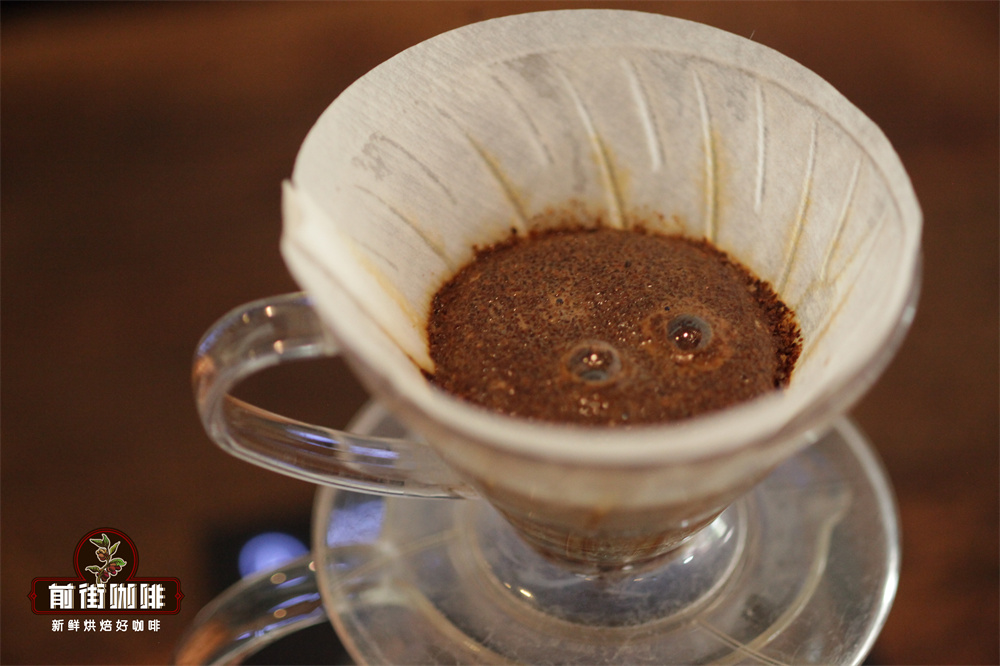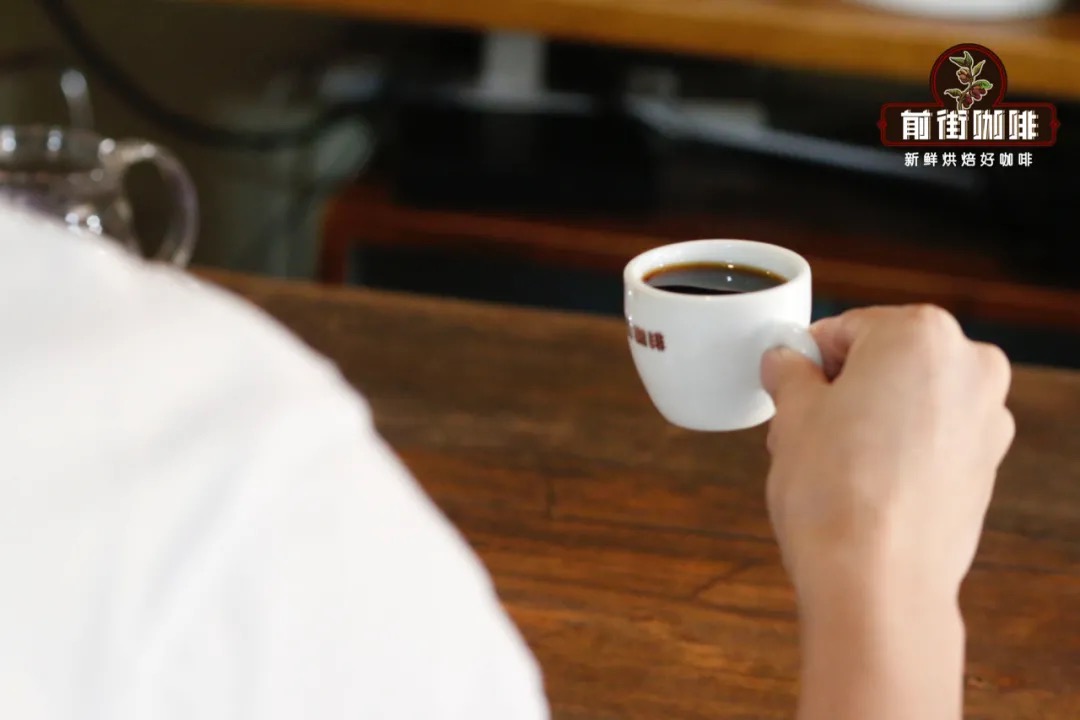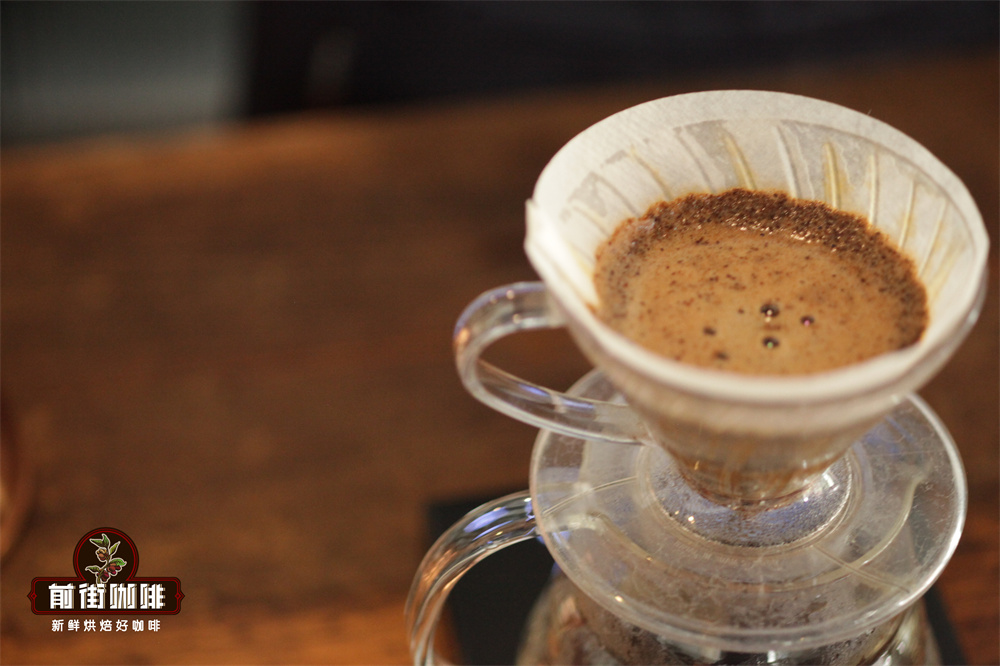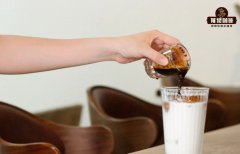What is Coffee Extract? How to judge under-extraction/over-extraction flavor performance of hand-brewed coffee
"insufficient extraction" and "over-extraction" are the two brothers who are most often misunderstood. Many friends think that coffee is "insufficient extraction" when drinking water, and "over-extraction" when drinking bitterness. In fact, the two brothers are not as hot as their friends think.

Q1: what is "coffee extraction"?
Coffee extraction is simply water as a solution, through the coffee particles combined with soluble substances, and finally get a taste-flavor coffee liquid.

Only 30% of a coffee bean is soluble, and the other 70% is wood fiber. Of the 30% soluble substances, only about 20% are positive flavor substances, and the remaining 10% are bitter / negative flavor substances. Because the dissolution time and speed of each substance are different, generally speaking, the positive flavor is the first and most easily dissolved, while the negative flavor takes longer to be dissolved.

So 30% is the maximum extraction rate of coffee, which is actually suitable for public taste. The coffee extraction rate is 18% Mel 22%, and this is also the best coffee extraction rate according to the gold cup extraction theory in SCA.
Q2: how to calculate the extraction rate of coffee?
When calculating the extraction rate, we need to use the coffee concentration meter (TDS detector) to detect. The coffee concentration meter can quickly detect the proportion of the extracted coffee substance to the total coffee liquid, and the main concentration is the coffee liquid. (if you want to calculate the concentration yourself, then the formula is: the weight of the extracted coffee substance / the weight of the coffee liquid. It's too complicated! Forget it... )

The extraction rate is the proportion of the extracted coffee substance to the total coffee bean weight, and the main extraction rate is coffee bean / coffee powder, so the calculation formula is: coffee solution concentration × coffee liquid weight / coffee bean (powder) weight.
With the concentration meter, we can easily calculate the extraction rate of coffee. If you calculate the extraction rate of hand-brewed coffee, you need to note that the steaming stage will absorb twice the weight of coffee powder, so the formula for calculating the weight of coffee liquid is water injection-coffee bean (powder) weight × 2.

Don't you get it? Let's have a 🌰: if you use 15 grams of coffee powder for drip extraction in the proportion of 1:16 water powder, and the concentration of the extracted coffee liquid is 1.37% measured by the concentration meter, then the extraction rate of coffee is calculated as follows: 1.37% × [(15 × 16)-(15 × 2)] / 15 × 19.18%.
Q3: what is "insufficient extraction"? What's the performance?
If we use the gold cup extraction theory to define the extraction rate, the extraction rate is less than 18% = insufficient extraction. Qianjie also knows that it is very painful to have a cup of coffee and do math problems, so let's talk about the performance of coffee flavor in the case of insufficient coffee extraction.
/ poignant & boring
The most obvious manifestation of the lack of coffee extraction is the outstanding sour taste. Coffee in the process of extraction taste substances release order: sour-sweet-bitter. The sour substances in the front part of the under-extracted coffee are basically extracted, but the sweetness and bitterness are not enough to reduce the sour taste and enhance the mellowness of the coffee, making the coffee very sour and insipid / short in finish.

/ salty taste
Under normal circumstances, salty taste rarely appears in the taste of coffee, because it will be masked by sweet and sour taste. The salty taste comes from the minerals and inorganic compounds in the coffee beans, and the sweet taste and the salty taste are mutually reinforcing, so when the extraction is insufficient and the sweet extraction is insufficient, we have the opportunity to feel the salty taste in the coffee.
Q4: what is "overextraction"? What's the performance?
If we use the gold cup extraction theory to define the extraction rate, the extraction rate is higher than 22% = over extraction. Again, the calculation is very painful! Next, let's take a look at the performance of coffee flavor in the case of over-extraction.
/ bitter
Bitterness here refers to a very unpleasant / unusual bitter taste. Bitterness does not mean that coffee is over-extracted. First of all, everyone has a different perception of bitterness, and over-extracted bitterness is unacceptable to some people, such as charred bitterness.

/ dry, dry feeling
When the over-extracted coffee enters the mouth, it will not only feel unusual bitterness, but also have a sense of dryness on the tongue, which means that the over-extracted coffee will show a very strong sense of bitterness when it enters the mouth. After swallowing, our throats immediately feel dry, or like a ball of smoke stuck in our throats for a long time.
Q5: how to treat "insufficient extraction" and "excessive extraction"?
"insufficient extraction" and "over extraction" are actually the conclusions drawn around the SCA golden cup criterion, which is based on the taste trend of the American people and the scientific research. When the extraction rate of a cup of coffee is less than 18% or more than 22%, it does not mean that the cup of coffee is bad.

Qianjie found in the actual brewing, with the different varieties of coffee beans / treatment method / roasting degree and so on, some coffee extraction rate is less than 18%, although a little boring, but the flavor is very clear; some coffee extraction rate is 22% higher, although the taste is strong, but not dry and astringent. In these cases, Qianjie Coffee is more likely to be described as "low extraction" or "high extraction".
Important Notice :
前街咖啡 FrontStreet Coffee has moved to new addredd:
FrontStreet Coffee Address: 315,Donghua East Road,GuangZhou
Tel:020 38364473
- Prev
Wuyishan rock tea Phoenix Mountain single fir tea flavor difference cinnamon and narcissus which grade is high
Wuyi tea is famous not only because of the age of its trees, but also because of the environment in which it grows. Wuyi tea plants are planted in rocky places. Indeed, Phoenix but the growth environment of Cong Oolong is also very unstable. They say seeing is believing. As you gaze at the photos below, it's hard to imagine where tea trees are planted. from far
- Next

What coffee beans are good for iced lattes? Iced latte practice course hand-in-hand teaching
Iced latte seems to be a very simple way, [pour milk with ice to pour coffee] is completed, seemingly simple operation, to make a good iced latte also takes a lot of mental understanding. The first point: choose the right material why ice latte is so simple, basically every coffee bean menu is necessary, but each family's iced latte taste will not be exactly the same.
Related
- Beginners will see the "Coffee pull flower" guide!
- What is the difference between ice blog purified milk and ordinary milk coffee?
- Why is the Philippines the largest producer of crops in Liberia?
- For coffee extraction, should the fine powder be retained?
- How does extracted espresso fill pressed powder? How much strength does it take to press the powder?
- How to make jasmine cold extract coffee? Is the jasmine + latte good?
- Will this little toy really make the coffee taste better? How does Lily Drip affect coffee extraction?
- Will the action of slapping the filter cup also affect coffee extraction?
- What's the difference between powder-to-water ratio and powder-to-liquid ratio?
- What is the Ethiopian local species? What does it have to do with Heirloom native species?

